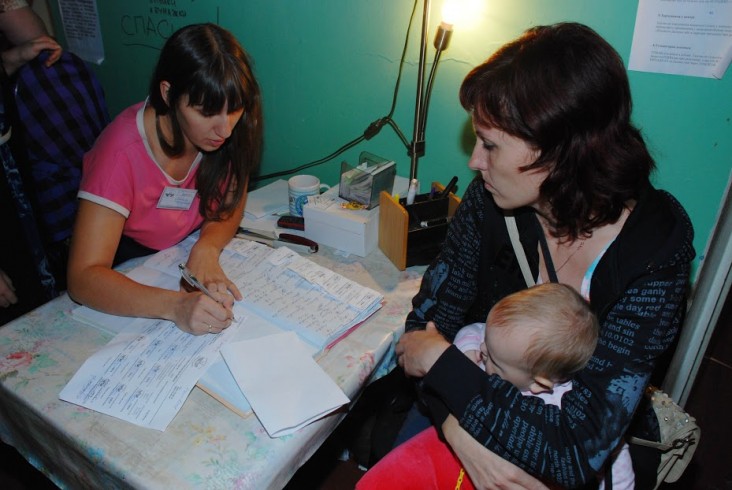
Feb. 2015—As Ukrainians continue to flee the conflict zone in the eastern region of the country, internally displaced persons (IDPs) are receiving critical assistance as NGOs and government ramp up efforts to meet their increasing needs.
USAID’s Office of Transition Initiatives (OTI) is supporting government and volunteer-led initiatives that address the mounting crisis. USAID began working in eastern Ukraine in July 2014 and quickly prioritized Dnipropetrovsk oblast due to its proximity to the clashes between Ukrainian forces and Russian-supported separatists and the rapidly growing number of IDPs.
Since the early days of the conflict in summer 2014, volunteer-led NGO Dopomoga Dnipra has provided shelter, food and other assistance to vulnerable IDP families at its center in Dnipropetrovsk. By September 2014, the center found it increasingly difficult to meet the challenges faced by IDPs and the host communities. Operating in a run-down former dormitory for railway workers, the center was facing growing exhaustion among volunteers and rising tensions.
Approximately 100,000 of the conflict’s estimated 800,000 IDPs have settled in or passed through Dnipropetrovsk. IDPs arriving at the train and bus stations are directed to the center to register for government services and to receive support from the volunteers, including counseling and some medical services. The center also temporarily houses IDPs while volunteers locate longer-term accommodations across the oblast.
In an effort to reinforce and sustain volunteer efforts, in September, USAID furnished and equipped two floors of the six-floor center and upgraded its electrical capacity to house 200 additional IDPs, for a total of 400 through the winter.
On the day the equipment was delivered, USAID supported a roundtable for over 30 officials from local and regional government and civil society to discuss and improve coordination in the displacement crisis.
“As volunteers, we want to serve not only as a driving force in displacement crisis response in collaboration with donors, but also as a key adviser to the state to help it better manage the IDP crisis and deliver services,” said Vladislav Makarov, director of Dopomoga Dnipra.
The roundtable, the first of its kind in the region since the crisis began, generated additional collaboration between local NGOs and government. As a result, a regional IDP Response Roadmap was jointly developed, making additional government services and support available to IDPs.
The public event raised Dopomoga Dnipra’s profile and led the regional government to name the Dnipropetrovsk center the region’s “One Stop Shop” for IDPs. The center subsequently attracted more than $1.8 million from other international donors to expand its services.
LINKS







Comment
Make a general inquiry or suggest an improvement.